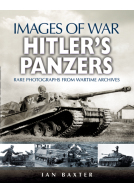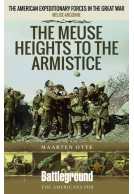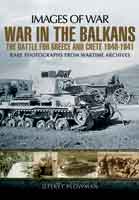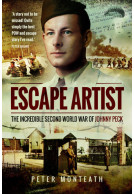The Warsaw Uprisings, 1943–1944 (Paperback)
Rare Photographs from Wartime Archives
Imprint: Pen & Sword Military
Series: Images of War
Pages: 128
ISBN: 9781526799913
Published: 2nd July 2021
(click here for international delivery rates)
Order within the next 3 hours, 11 minutes to get your order processed the next working day!
Need a currency converter? Check XE.com for live rates
| Other formats available | Price |
|---|---|
| The Warsaw Uprisings, 1943–1944 ePub (191.7 MB) Add to Basket | £6.99 |
By 1942 the Nazi leadership had decided that the Jewish ghettos across occupied Poland should be liquidated, with Warsaw’s being the largest , processed in phases.
In response the left-wing Jewish Combat Organisation (ZOB) and right-wing Jewish Military Union (ZZW) formed and began training, preparing defences and smuggling in arms and explosives.
The first Warsaw Ghetto Uprising began in April 1943. Although this was quelled at devastating cost to the Jewish community, resistance continued until the summer of 1944. By this time the Red Army was closing on the city and with liberation apparently imminent the 40,000 resistance fighters of the Polish Home Army launched a second uprising.
For sixty-three days the insurgents battled their oppressors on the streets, in ruined buildings and cellars. Rather than come to their aid the Russians waited and watched the inevitable slaughter.
This gallant but tragic struggle is brought to life in this book by the superb collection of photographs drawn from the album compiled for none other than Heinrich Himmler entitled Warschauer Aufstand 1944.
Of the numerous tragedies which befell the Polish people during the Second World War, the Warsaw Uprising of 1944 was certainly amongst the worst, as the proximity of the Red Army encouraged the Polish Home Army to rise up to assist the advance of their liberators, but they did not come and instead allowed the resistance to be crushed. The fighting raged for 63 days, at the conclusion of which the city had been systematically demolished but remarkably the survivors of the Home Army were treated as prisoners of war, though many civilians were deported as slave labour and some ended up in concentration camps. The superb photographs in this book chronicle this sad episode, and equally that of the Jewish Ghetto Uprising of 1943, which was brutally put down with a much less favourable outcome for its participants. As is typical of the Images of War series, the excellent quality photographs have been carefully selected and come with detailed explanatory notes.
Pegasus Archive
Read the full review here
Video review featured on Let's Talk About Military History
Let's Talk About Military History
The pictures in this excellent book show the streets and buildings that were destroyed along with the lives of all those involved. This is a superb and haunting collection of pictures that shows Warsaw that was being destroyed over a year. This book shows the devastation that the SS brought on to the city by blowing up houses and streets and then putting a concentration camp in their place to help them deal with the uprisings... Another excellent and haunting book from Ian Baxter.
GoodReads, Paul Diggett
Read the full review here
I really enjoy the books in this series and this one was no different, it was a great set of images that were chosen to bring the events that covered the Warsaw Uprisings between 1943 and 1944.
Donna's Book Blog
I do like that the books in this series in that they allow the photos to tell the story, they let the reader study images to make their own impressions and they can see the pain and concerns on the faces. Some of the images are harrowing, I can only imagine what these people went through and the risks that they would have faced, the devestition to the families and individuals is just heartbreaking too, that said I do think books like this are must reads to keep the memory of what did happen alive to make sure that this type of history really does not repeat itself.
This for me, is necessary reading for anyone interested in World War II and this book is a great addition to the Images of War series. It is 5 stars from me for this one – not easy reading in places but very highly recommended!
Read the full review here
Featured in
WWII History
As usual, this book is full of top quality photographs unfortunately because of the subject matter there is the odd sad or disturbing photograph.
UK Historian
Read the full review here
Today the city of Warsaw is rebuilt and indeed, re-populated, one of Europe's great cities. Hard to imagine perhaps what happened just 75 years ago. Questions remain, why did the Nazis do this, rather than treat them normally and so gain willing allies, and just why did the Russians decide to stop and let them destroy the heart of Poland at the time. A somewhat scary book in some ways, but a reminder of what humans can do to each other and surely ask ourselves why, so a tribute to the Polish people who died for their country and evidence from the misguided individuals who even recorded their own guilt.
Military Model Scene
Read the full review here
"Enjoyed the scope and tone of the book."
The Historical Miniatures Gaming Society
Read the review here
This book is one of those titles that shows you how whole groups of people can be treated as detritus and still have enough fight in them to rise up against their oppressors. The conditions above ground are well detailed, but its the secret hides they created underground that caught and held my attention. These quarters underground enabled them to move around in the sewers and obtain items with which to fight back. The written content provides a good insight into what the photographs portray and could make for some interesting diorama’s.
Armorama
Read the full review here
Baxter’s narrative is straightforward and uncontroversial. But, as with all the Images of War series, the quality of the photographs give this book its value. Many are truly harrowing, even just the photos of lines of Jews being escorted out of Warsaw because we know their fate. The photos of often frightened fighters being captured conjure up similar emotions, while photos of laughing German soldiers prompt anger. Yet, looking closely, you can see the dignity and determination of the Jews; men dressed in suits, shirts, and ties, sombre rabbis, defiant women having lost everything yet standing upright in the face of death. The story being told in these photographs is one of true heroism, courage, and hope, and it is one worth telling again and again as Europe continues to face the legacy of the Nazism and hate in the 21st Century.
Beating Tsundoku
Read the full review here
About Ian Baxter
Ian Baxter is a much-published author and photographic collector whose books draw an increasing following. Among his many previous titles in the Images of War Series are Hitler’s Boy Soldiers, Nazi Concentration Camp Commandants, The Ghettos of Nazi Occupied Poland, German Army on the Eastern Front – The Advance, German Army on the Eastern Front – The Retreat, The Crushing of Army Group (North) and the SS Waffen Division series including SS Leibstandarte Division, SS Totenkopf Division At War, Waffen SS of the Baltic States, Waffen SS at Arnhem and Waffen SS in the Ardennes. He lives near Chelmsford, Essex.



























